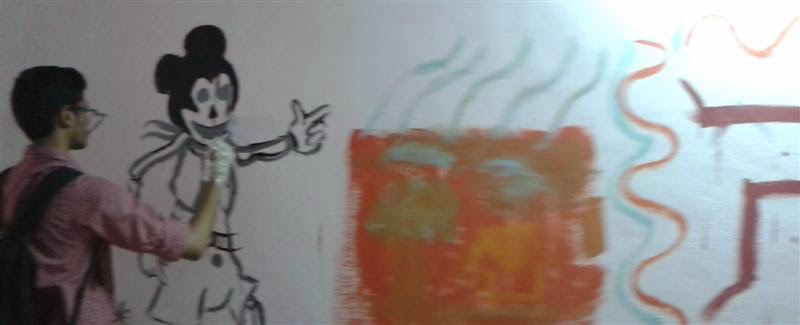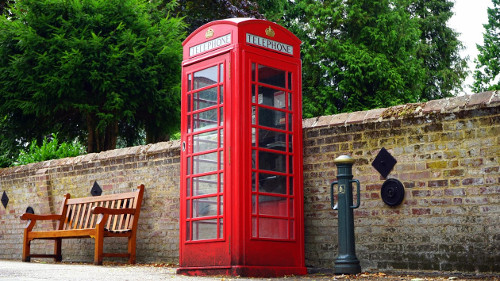I have long held the belief that any technology that you can imagine, is actually possible to create. As for wives who expect their husbands to read their minds, the appropriate tech is on it's way :) Something like the ideal UI which I wrote about.
Researchers and technologists from the University of Barcelona, Neurodynamics lab, Starlab, Axilum robotics, Neuroelectrics Barcelona, Cognition and brain plasticity unit, Berenson Allen center for non invasive brain stimulation and Havard medical school, Boston, have successfully transmitted a message directly from one human brain in Kerala to another human brain in France. Check it out!
This is done "non-invasively". Which means, that there are no wires inserted into your brain. All machines are outside (and it took more than 15 years of research to bring it to this stage).
The Brain to Computer Interface (BCI)
Uses an ElectroEncephaloGram (EEG) connected to the internet. The volunteer imagines moving his feet to stimulate the motor cortex of the brain which is captured by the EEG at a certain spectral power (voltage/frequency) and translated into the number 0. The volunteer imagines moving his hands and that's translated into the number 1.
To accomplish this, the volunteer was shown the sequence of 0's and 1's as a 0 on the bottom-right corner of the screen or a 1 on the top-right corner. When the volunteer saw the number, he had to imagine a leg movement or a hand movement so that the EEG picks up the signal.
They confirmed the correctness of whether to transmit the imagined data or not, using a ball which moves from left to right on the screen, at constant speed. Only if the number shown on the screen matches with what the volunteer imagines, will the ball hit the rectangular target on the right of the screen. Othewise, the ball moves vertically.
The Computer to Brain Interface (CBI)
Uses a Transcranial Magnetic Stimulation (TMS) that receives BCI data transmitted through the internet. The TMS machine stimulates bi-phasic pulses on the cortex area in the occipital lobe of the brains of three volunteers. They had to separately identify the phosphene (the feeling of seeing light although no light enters the eye. I wonder if this is the 'light' that NDE people see) producing area in the right visual occipital cortex area of each volunteer's brain.
The intensity of the pulses can be adjusted such that the induced electric field can be oriented in two different angles; one angle representing the number 1 and the other perpendicular angle representing the number 0. Only the angle representing 1, produced phosphenes in the brain.
Sending and receiving
Using these techniques, on March 28th 2014, 140 numbers (called bits) were sent from Thiruvananthapuram by the BCI machine which used email to transmit the data, and were received by the CBI at Stratsbourg. The message was "hola" which was translated into bits. The second message sent was "ciao" (many people misspell it as 'chao').
The words were encoded using a 5 bit Bacon cipher and replicated for redundancy 7 times, randomized with random ciphers selected to produce balanced pseudo-random sequences of 0's and 1's. These were transmitted by the BCI at 3 bits per minute. The CBI received it at 2 bits per minute and the bits were de-cyphered and majority voting from the 3 volunteers was used to decode the message. For "hola", the transmission error rates were 6%, 5% and 11% for each volunteer. For "ciao", it was 2%, 1% and 4%.
Ensuring that the volunteers weren't guessing
Since these were 0's and 1's being transmitted, it's pretty-much like a coin being tossed. This technique of randomizing had to be used to ensure that the volunteers weren't guessing which bits were being received by the CBI. The probability of guessing 140 random bits with an error rate of 20% (28 errors out of 140) is very low (similar to the probability of ending up with 112 Heads for 140 coin tosses. The probability of it being 0.0000000000001).
The code
MATLAB was used for the programming. The code is from the plosone website.
Possibilities
Awesome! Isn't it? We're still a very long way to being able to use a device on our head which will allow us to communicate with others without even having to talk.
Just imagine:
The internet would have to change significantly to adapt to this kind of a technology. A nice future is in store for human-kind.
The research paper which shares this technology, is here.
Researchers and technologists from the University of Barcelona, Neurodynamics lab, Starlab, Axilum robotics, Neuroelectrics Barcelona, Cognition and brain plasticity unit, Berenson Allen center for non invasive brain stimulation and Havard medical school, Boston, have successfully transmitted a message directly from one human brain in Kerala to another human brain in France. Check it out!
This is done "non-invasively". Which means, that there are no wires inserted into your brain. All machines are outside (and it took more than 15 years of research to bring it to this stage).
The Brain to Computer Interface (BCI)
Uses an ElectroEncephaloGram (EEG) connected to the internet. The volunteer imagines moving his feet to stimulate the motor cortex of the brain which is captured by the EEG at a certain spectral power (voltage/frequency) and translated into the number 0. The volunteer imagines moving his hands and that's translated into the number 1.
To accomplish this, the volunteer was shown the sequence of 0's and 1's as a 0 on the bottom-right corner of the screen or a 1 on the top-right corner. When the volunteer saw the number, he had to imagine a leg movement or a hand movement so that the EEG picks up the signal.
They confirmed the correctness of whether to transmit the imagined data or not, using a ball which moves from left to right on the screen, at constant speed. Only if the number shown on the screen matches with what the volunteer imagines, will the ball hit the rectangular target on the right of the screen. Othewise, the ball moves vertically.
The Computer to Brain Interface (CBI)
Uses a Transcranial Magnetic Stimulation (TMS) that receives BCI data transmitted through the internet. The TMS machine stimulates bi-phasic pulses on the cortex area in the occipital lobe of the brains of three volunteers. They had to separately identify the phosphene (the feeling of seeing light although no light enters the eye. I wonder if this is the 'light' that NDE people see) producing area in the right visual occipital cortex area of each volunteer's brain.
 |
| The visual occipital cortex area of the brain |
The intensity of the pulses can be adjusted such that the induced electric field can be oriented in two different angles; one angle representing the number 1 and the other perpendicular angle representing the number 0. Only the angle representing 1, produced phosphenes in the brain.
Sending and receiving
Using these techniques, on March 28th 2014, 140 numbers (called bits) were sent from Thiruvananthapuram by the BCI machine which used email to transmit the data, and were received by the CBI at Stratsbourg. The message was "hola" which was translated into bits. The second message sent was "ciao" (many people misspell it as 'chao').
The words were encoded using a 5 bit Bacon cipher and replicated for redundancy 7 times, randomized with random ciphers selected to produce balanced pseudo-random sequences of 0's and 1's. These were transmitted by the BCI at 3 bits per minute. The CBI received it at 2 bits per minute and the bits were de-cyphered and majority voting from the 3 volunteers was used to decode the message. For "hola", the transmission error rates were 6%, 5% and 11% for each volunteer. For "ciao", it was 2%, 1% and 4%.
Ensuring that the volunteers weren't guessing
Since these were 0's and 1's being transmitted, it's pretty-much like a coin being tossed. This technique of randomizing had to be used to ensure that the volunteers weren't guessing which bits were being received by the CBI. The probability of guessing 140 random bits with an error rate of 20% (28 errors out of 140) is very low (similar to the probability of ending up with 112 Heads for 140 coin tosses. The probability of it being 0.0000000000001).
The code
MATLAB was used for the programming. The code is from the plosone website.
Cipher used for word
transmission:
To encode the 4-letter words
we used a Bacon cipher (Matlab code follows):
%% First we encode the
letters using the Bacon cypher:
h = [0 0 1 1 1];
o = [0 1 1 0 1];
l = [0 1 0 1 0];
a = [0 0 0 0 0];
% now we form the word bit
string:
word=[ h o l a ];
% and the resulting
strings repeated 7 times,
Reps=7;
repword=repmat(word,1,Reps);
%% Encrypting and
balancing (for later stat analysis)
% Repeat this block till
you get a sum of 50% of the length for the sum.
% First, create the
randomizing cipher
cypher = round(rand(length(repword),1)');
% Encrypt the word
transmit= mod(cypher+repword,2);
% check that we have 50%
1s and 0s:
sum(transmit) %
should be 70=?10/2
%check we can decode after
reception! This shoudl be zero:
sum(repword - mod(transmit+cypher,2))
%% Summarizing.
% Message to transmit:
transmit
% decoding cipher
cypher
E.g, the second 140 string
transmitted was
transmit= [1 1 0 0 1 0 1 1 1 1 0 1 1 0 1 0 1 0
1 0 1 0 1 0 1 1 0 0 1 0 1 0 0 0 0 1 0 1 1 1 0 0 1 0 0 0 1 1 1 1 0 1
1 0 0 0 0 1 1 1 1 0 1 0 11 0 0 0 0 1 0 1 0 1 0 1 1 1 1 0 1 1 0 1 0 0
1 0 1 0 0 1 1 1 0 0 1 0 1 0 1 0 0 0 1 1 1 1 1 0 0 0 1 0 1 0 0 0 1 0 1
0 0 1 1 1 0 0 1 0 1 0 0 0 0 0 0 1 1].
Decoding was done again by
addition of the cipher mod 2. The resulting 140 bit string was then
split into 7 blocks, and each block into 4 letters of 5 bits each.
Majority voting from each block was used to fix the final bit value
for the 20 bit encoded word.
Possibilities
Awesome! Isn't it? We're still a very long way to being able to use a device on our head which will allow us to communicate with others without even having to talk.
Just imagine:
- You'll be able to transmit an image of a movie scene you watched (but forgot the name), into your friend's brain and ask your friend what the name of the movie was.
- You'll be able to communicate with people who don't know your language.
- You might even be able to communicate with animals (if mosquitoes could be made to wear the device, you could warn them to stop buzzing in your ear :) just kidding)
- You'd be able to control devices just by imagining it!
- People might eventually be able to read into other's thoughts (hacking), but by then there would be ways to block that too.
The internet would have to change significantly to adapt to this kind of a technology. A nice future is in store for human-kind.
The research paper which shares this technology, is here.















































